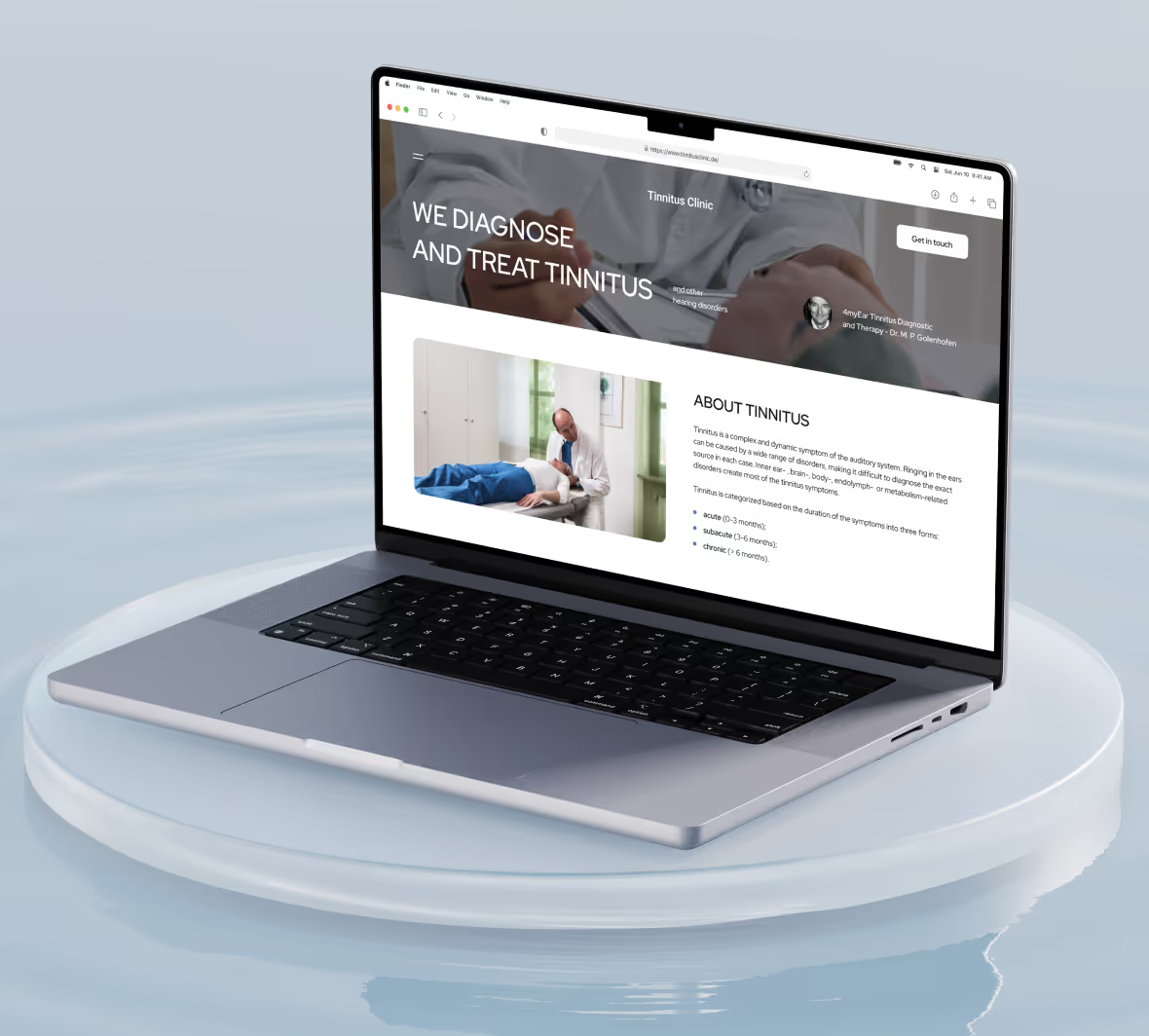
Consider you’re ready to launch your SaaS product but don’t know if your idea will resonate with your target users. You can spend weeks (or months) building robust functionality or create a no-code MVP to test your assumptions and get valuable feedback. This approach can save you time and money while reducing the risks associated with your product launch. This guide will explore some of the critical advantages of MVP development for SaaS products and how to get started today to achieve your goals.
Minimum Code is a no-code development agency that can help you build your MVP quickly and efficiently. With our talented team of no-code experts, you can create a fully functioning prototype to test your ideas before you invest in the complete build.
What Is Software As A Service?

Software as a Service (SaaS) is more than just a delivery model; it's a comprehensive ecosystem transforming how businesses operate and engage with technology. Here's a deeper look into its core attributes and how it affects various aspects of software use:
Cloud-Based Infrastructure
SaaS operates on cloud infrastructure, meaning software applications are hosted on remote servers rather than local machines. This shift to the cloud facilitates smooth updates, maintenance, and integration, ensuring users consistently access the most current features. Additionally, the cloud environment enhances collaboration, as teams can work simultaneously on the same project from different locations.
Subscription Model
Most SaaS applications utilize a subscription-based model, typically involving monthly or annual payments. This model provides several advantages:
Predictable Costs
Businesses can forecast their software expenses more accurately without large upfront investments.
Lower Barrier to Entry
Startups and small businesses can access advanced software solutions without incurring heavy costs.
Flexibility in Scaling
As a business grows, it can easily upgrade its subscription to access more features or user accounts without needing extensive infrastructure changes.
Multi-Tenancy Architecture
SaaS applications often use a multi-tenant architecture, where a single software instance serves multiple customers. This setup allows efficient resource utilization, as updates and features can be rolled out universally without affecting individual users. It also enhances security, as data is partitioned and encrypted, safeguarding against unauthorized access.
Accessibility and Mobility
One of the standout features of SaaS is accessibility. Users can access SaaS applications from any device with an internet connection, enabling greater mobility and flexibility. This capability is especially crucial in today’s work environment, where remote work and on-the-go accessibility are increasingly common. Employees can collaborate on projects in real-time, regardless of physical location, fostering enhanced teamwork and productivity.
Data Security and Compliance
SaaS providers typically implement robust security measures to protect user data. This includes data encryption, secure data storage, and compliance with industry regulations (e.g., GDPR, HIPAA). While concerns about data privacy persist, reputable SaaS vendors invest heavily in security infrastructure, often exceeding what a small or medium-sized business could afford to implement on its own. As a result, organizations can rely on these providers to safeguard sensitive information while ensuring compliance with applicable laws.
Integration and Customization
Many SaaS solutions offer integration capabilities with other software applications, allowing businesses to create a smooth workflow. This integration can enhance productivity by automating repetitive tasks and ensuring data consistency across platforms. Additionally, some SaaS applications provide customization options, enabling organizations to tailor functionalities to meet specific needs. This flexibility can lead to better user adoption and satisfaction.
Continuous Improvement and Innovation
SaaS providers are motivated to continually improve their offerings. Regular updates ensure that users benefit from the latest technology trends, such as artificial intelligence (AI), machine learning (ML), and enhanced user experience (UX) design. This continuous innovation is crucial for businesses that want to stay competitive in a rapidly evolving marketplace.
What Is An MVP?

A Minimum Viable Product (MVP) is a crucial concept in software development and startups, particularly within the Software as a Service (SaaS) landscape. At its core, an MVP is a stripped-down product version that includes only the essential features necessary to satisfy early adopters and gather feedback for future iterations.
Why Create an MVP?
An MVP serves two primary purposes: validating a business idea and minimizing development costs. Launching a product with the minimum necessary features allows businesses to enter the market faster and gather honest user feedback. This feedback is invaluable for making informed decisions about product development and future enhancements.
Key Characteristics of an MVP
Core Functionality
An MVP focuses on the essential features that solve a specific problem for its target audience. This ensures that the product addresses a real need without unnecessary frills.
User Feedback Loop
An effective MVP is designed to collect user feedback actively. By engaging early adopters, businesses can gain insights into user behavior, preferences, and pain points, allowing them to make data-driven decisions about future development.
Scalability Potential
While an MVP is a minimal version of the final product, it should be built on a scalable architecture. As user demand grows, the product can evolve and expand without significant technical overhauls.
Speed to Market
One of the most significant advantages of an MVP is its ability to get to market quickly. This speed allows startups to establish a presence and build a user base before investing heavily in further development.
The Importance of an MVP
Risk Mitigation
Launching an MVP allows businesses to validate their ideas without requiring extensive resources. If the product fails to resonate with users, financial and time investments are minimized.
Focused Development
An MVP encourages teams to concentrate on solving specific problems for users rather than getting sidetracked by additional features that may not be necessary initially. This focus can lead to a more streamlined development process and a clearer product vision.
Attracting Investors
Demonstrating a viable product, even in its most basic form, can help attract investors. An MVP provides tangible evidence that the idea has potential, increasing the likelihood of securing funding for further development.
Building a Community
Early adopters of an MVP often become invested in the product’s development. This can lead to a loyal user base that feels heard and appreciated, as their feedback directly influences the product’s evolution.
Examples of Successful MVPs
Several well-known companies started with MVPs to test their ideas in the market. For instance:
Dropbox
Before fully developing its file-sharing service, Dropbox launched a simple video explaining the concept. The overwhelming interest from viewers validated the idea and prompted the company to build the product.
Airbnb
The founders initially rented their apartment to test the market. This MVP helped them refine their platform and understand the needs of hosts and guests.
With Minimum Code, you can finally bring your long-held business idea to life quickly and efficiently without breaking the bank. Bring your long-held business ideas to life with us. Get a free product discovery and scoping for your app idea today!
Related Reading
- MVP in Scrum
- Types of MVPs
- MVP Testing Methods
- Minimum Viable Product vs Prototype
- Minimum Viable Product Examples
- MVP App Development
- MVP Testing
- MVP Marketing
- Build MVP
- Prototype vs MVP
Importance of Building an MVP for SaaS Startups

Cutting Costs with a Focus on MVP Development for SaaS Startups
Building a full-featured SaaS product can require significant time and resources. By focusing on the MVP, startups can minimize initial costs and allocate budgets more efficiently. This is especially crucial in the SaaS sector, where ongoing development, marketing, and customer support also demand financial resources.
The Need for Speed: How MVP Development Gets SaaS Startups to Market Fast
In a fast-paced digital environment, being first can provide a competitive advantage. Launching an MVP allows startups to enter the market quickly, establishing their presence and gaining visibility. This speed enables them to build a customer base before the product is fully developed.
How an MVP Approach Helps SaaS Startups Understand Their Users
An MVP approach emphasizes understanding user needs and preferences. By launching with core features, startups can engage early adopters who provide valuable feedback. This feedback loop is instrumental in iterating and refining the product, ensuring it evolves in line with user expectations. For SaaS businesses, this user-centric focus leads to more effective solutions, fostering customer loyalty.
How MVP Development Reduces Risk for SaaS Startups
The SaaS industry is filled with uncertainties, from market demand to competition. An MVP allows startups to test their hypotheses without risking substantial investments. If the MVP fails to gain traction, businesses can pivot or adjust their strategies early, reducing the likelihood of significant losses.
Why Scalable MVPs Are Key to Future Growth
Although an MVP is minimalistic, it should be designed with scalability in mind. This forward-thinking approach enables startups to enhance their products as demand grows. SaaS startups can adapt to increased user loads and feature demands without complete overhauls using scalable technology stacks and architecture.
How an MVP Can Provide a Competitive Edge for SaaS Startups
In many industries, startups face established competitors with comprehensive solutions. An MVP can differentiate a new entrant by targeting a niche market or specific user pain points that competitors may overlook. By focusing on solving these problems effectively, startups can carve out a market share, even in crowded spaces.
Related Reading
- MVP Features
- MVP Development Process
- How to Build an MVP
- MVP Developer
- MVP Benefits
- MVP Development for Startups
- Develop MVP
- How to Build an MVP App
- MVP Development Cost
Step-by-Step Guide to Building a SaaS MVP

Step 1: Define Your Business Idea
Before proceeding with development, you must understand your business idea. This means identifying the problem your SaaS product will solve and the specific audience it will serve. Then, conduct market research to validate your assumptions, gather insights on potential customers, and analyze competitors. This foundational step helps refine your concept and sets a clear direction for the rest of the process.
Step 2: Identify Core Features
With a defined business idea, the next step is to identify the core features of your MVP. Focus on the functionalities that address the primary pain points of your target audience. The goal is to strip away non-essential features, concentrating only on what is necessary to deliver value to your users. Creating a feature prioritization matrix can help categorize features based on their importance and feasibility.
Step 3: Create User Personas and User Stories
Understanding your users is critical to successful MVP development. Create user personas representing your target audience, capturing their demographics, motivations, and challenges. Alongside this, develop user stories that outline how these personas will interact with your product. This exercise ensures the MVP aligns with user needs and experiences, guiding the design and development process.
Step 4: Design Wireframes and Prototypes
With a clear understanding of features and users, it's time to design wireframes and prototypes. Wireframes serve as blueprints for your MVP, illustrating the layout and functionality of each screen. Prototypes take this further by simulating the user experience, allowing you to visualize the product flow. This phase is critical for gathering stakeholder feedback and making necessary adjustments before development begins.
Step 5: Develop the MVP
Once wireframes and prototypes are finalized, the development phase begins. Choose the technology stack based on your product requirements, scalability needs, and team expertise. Start with the core features identified earlier, ensuring a lean development approach. Agile methodologies are often beneficial during this phase, allowing for iterative development and regular feedback loops.
Step 6: Test the MVP
Thorough testing is essential before launching to ensure the MVP functions correctly and meets user expectations. Conduct various types of testing, including functional, usability, and performance. Collect feedback from early users and stakeholders to identify any issues or areas for improvement. This phase is crucial for refining the product and enhancing user satisfaction.
Step 7: Launch and Gather Feedback
With testing complete, it's time to launch your MVP. Begin by targeting a small audience of early adopters who can provide valuable feedback. Monitor user engagement, collect usage data, and actively solicit feedback to understand how the MVP is received. This information is invaluable for identifying strengths and weaknesses and guiding future iterations and enhancements.
Step 8: Iterate and Enhance
Post-launch, focus on continuous improvement. Analyze the feedback collected and identify trends in user behavior. Use this data to prioritize new features, adjust, and enhance the overall user experience. An iterative approach allows you to adapt the product based on real-world usage, ensuring it evolves to meet customer needs.
Building a SaaS MVP involves a structured approach that emphasizes understanding user needs, defining core features, and iterating based on feedback. By following this step-by-step guide, startups can develop a product that addresses market demands and lays the groundwork for future success and scalability.
Tools and Technologies for SaaS MVP Development

Boost Your Workflow with Project Management and Collaboration Tools
Keeping your team organized and on the same page is crucial when building your SaaS MVP. Project management and team collaboration tools help streamline the development process so you can make your MVP faster. With such tools, you can effectively manage tasks, timelines, and team communications.
Trello is a visual project management tool for small teams that use boards and cards to organize tasks. It’s great for helping teams manage workflows. Asana is a robust task management platform that allows teams to assign tasks, set deadlines, and track progress in a more structured manner. Slack is a messaging platform designed for team communication that allows for real-time messaging, file sharing, and integrations with other tools.
Visualize Your Product with Prototyping and Design Tools
Before diving into development, creating wireframes or prototypes can help visualize the product and gather feedback. Prototyping and design tools allow you to create mockups to illustrate your product’s look and functionality before you start building. Figma is a web-based design tool that facilitates collaborative design, allowing multiple users to work on a project simultaneously. It’s excellent for UI/UX design. Adobe XD is a vector-based design tool for web and mobile apps, offering tools for prototyping and sharing designs for feedback.
Use Development Frameworks and Libraries to Build Your Application
Development frameworks and libraries provide a foundation for building your application, saving time and effort. For instance, React is a popular JavaScript library for building user interfaces, especially single-page applications. Its component-based architecture allows for reusable code.
Django is a high-level Python web framework encouraging rapid development and clean, pragmatic design. It is ideal for backend development. Ruby on Rails is a server-side web application framework written in Ruby. It emphasizes convention over configuration and is excellent for developing MVPs quickly.
Select a Reliable Cloud Hosting Infrastructure
Choosing the right cloud service provider is critical for hosting your application and ensuring scalability. Amazon Web Services, or AWS, offers a wide range of services, including computing power, storage, and networking. It’s highly scalable and reliable. Google Cloud Platform, or GCP, is known for its robust data analytics and machine learning capabilities. GCP provides a flexible cloud infrastructure suitable for various SaaS applications. Heroku is a platform-as-a-service that enables developers to build, run, and operate applications entirely in the cloud. It simplifies deployment and scaling.
Streamline Monetization with Payment Processing Solutions
Integrating a payment gateway is essential for monetizing your SaaS product. Payment processing solutions make it easy to accept and manage online transactions. Stripe is a developer-friendly payment processing platform that allows businesses to accept payments online easily. It supports various payment methods and currencies. PayPal is a widely recognized payment platform that offers easy integration for online transactions and provides extensive support for different payment methods.
Optimize Your Product with Analytics and Monitoring Tools
Understanding user behavior and application performance is crucial for making informed decisions. Analytics and monitoring tools help track and visualize data to improve your product over time. Google Analytics is a powerful tool that tracks and reports website traffic. It provides insights into user interactions, which can guide feature improvements. Mixpanel focuses on event tracking and provides detailed analytics on user behavior within your application, allowing for data-driven decisions.
Implement Customer Support Tools for Assisting Your Users
Providing excellent customer support is critical to retaining users and improving your product. Customer support tools help you manage and respond to user inquiries efficiently. For instance, Zendesk is a comprehensive customer service platform that helps businesses manage customer support tickets and inquiries efficiently. Intercom offers live chat, messaging, and email support tools for real-time user communication.
Get a Free Product Discovery & Scoping for Your App Idea Today
Minimum code means using the most minor code to build a functioning product. This is especially important for MVP development because it lets you focus on the core features that solve your users' problems. The faster you can build, test, and iterate your MVP, the better.
Related Reading
- MVP Development Team
- Launching an MVP
- MVP Tools
- MVP Validation
- MVP Timeline
- No Code Agencies
- Lean Startup MVP
- Creating an MVP

Ready to build your product?







